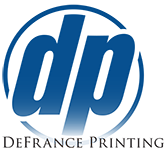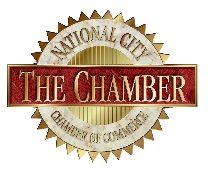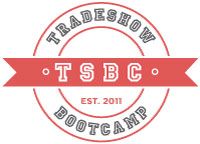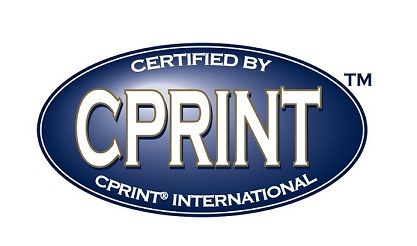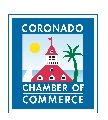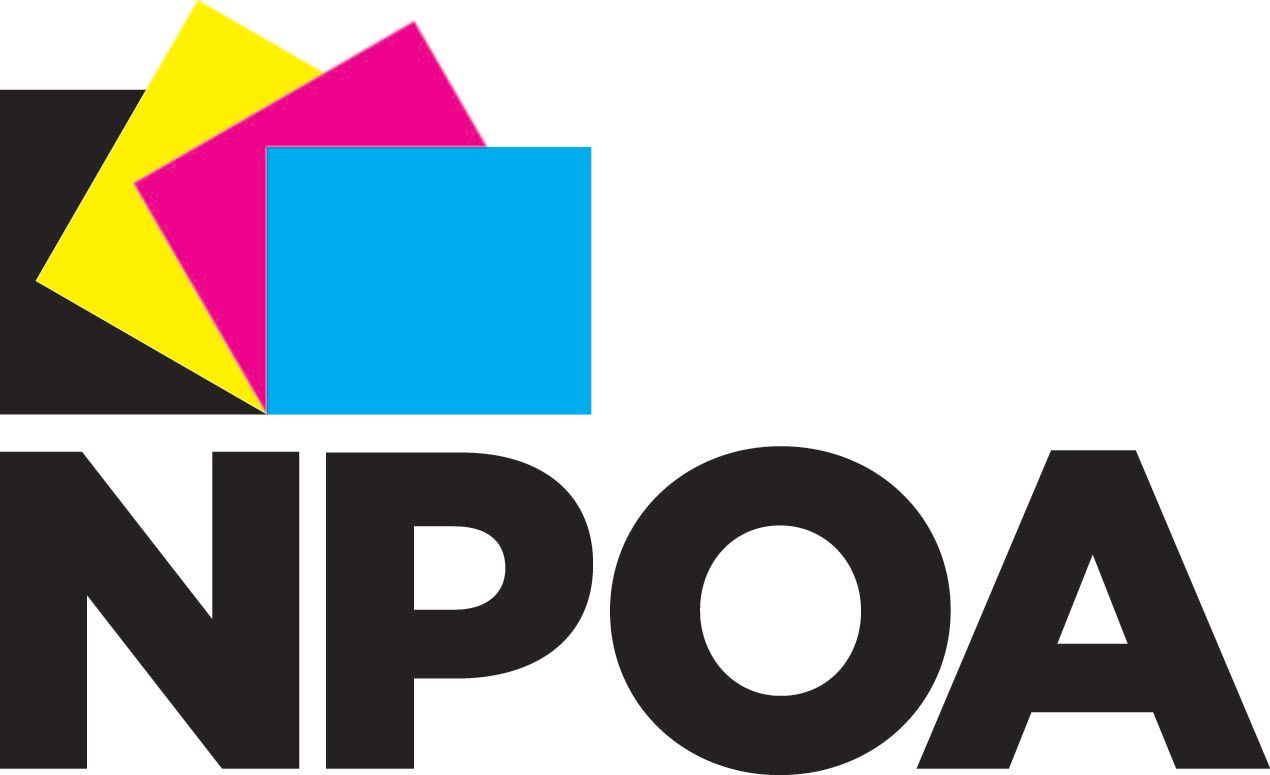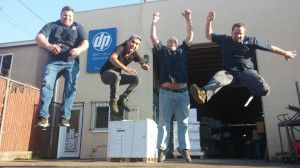
Here you'll find answers to common questions our clients ask. Start by selecting one of the links below. If you don’t see what you need – call or contact us online.
- What type of products and services do you provide?
- How do I go about getting an estimate from you?
- What is the best way to submit a file?
- What type of proofs do you offer?
- What is your standard timeframe?
- Can a PDF file print poorly?
- Do you accept native application files?
- Do you accept files created by graphic illustration applications?
- Do you accept native word processing files such as Word and Wordperfect?
- What happens if the file prints incorrectly?
- Does supplying my own digital file save me money?
- Why do the printed colors look different from the colors on my screen?
- Once I submit the documents, how long will it take to finish my job?
- What are the comparative advantages of producing my job on your duplicating devices versus producing them on your presses?
-
Good question! We are offer a wide range of products and services, but we are best known for the printing services we provide to the wholesale stationery community. Whether it is producing greeting cards or art prints, catalogs to help you sell more product, prototyping a new product or handling you’re warehousing and fulfillment, we make your designs look amazing in print.
Product List…. Greeting Cards, Art Prints, Journals, Note Books, Note Pads, Wine Tags, Catalogs, Business Cards, Invitations, Buttons, Magnets and more
-
For standard items go to our wholesale stationery page and at the bottom of each page you will find a pdf with pricing for each item.
The best way to ensure that we get all the information necessary to do an accurate quote is to ensure we have all of the pertinent details. Make sure whether you call in or send it through our website that you include the following.
Project Type - (greeting cards/ art prints/ journals etc)
Quantity - (provide a range you think would work for you)
Paper- (we prefer you choose from one of our house sheets or you can mark in a sheet you are interested in. Making sure to in the weight of the paper/ paper color and finish)
Ink- (CMYK VS Pantone colors vs Foil)
Bindery - (Include if the items needs to score, bind in a specific way or package other than bulk)
Shipping- (Where and how do you need this shipped) -
What is the best way to submit a file?
Many of our clients create their own documents and submit them print ready. This saves time and can get your job completed faster. You will need to make sure the files are created to print properly on commercial printing equipment.
The best way to submit a file is to create a PDF file. A PDF file usually contains all of the images and fonts you used to create your file and makes file sharing easier. To make it easy, you can download our special application called PDF Preflight application. It can turn any program that can be printed into a printable PDF file and delivers the file directly to us. It eliminates many of the common problems when give a file to a commercial printer and corrects many common mistakes. Go to the PDF Preflight tab on our website and download the program.
If you are a profession graphic designer, you probably use an application such as Adobe InDesign or QuarkXpress. Both of these programs can export their finished document as a PDF file. Microsoft Publisher, a popular desktop publishing program for the amateur user, can also export the finished file as a PDF file. Our PDF Preflight application can also be used to output InDesign, QuarkXpress and Publisher files as PDF files.
We also recommend that any Microsoft Word files or other word processing files you submit for printing be submitted as a PDF file.
When submitting a file, please use our Send A File tab on our website. This allows you to send larger files than you could normally send as an email attachment and gets them to us faster. -
What type of proofs do you offer?
Even when dealing with electronic files, proofs are important. All jobs ordered through DeFrance will receive a free pdf proof. If you need a hard copy proof we do have options depending on the type of job you are ordering.
Digital Printing- We can offer you a press proof, this will be printed on the exact press and paper of your order giving you a great look at what your job will print like. We charge $35 for up to 5 12 x 18” press sheets + UPS charges. This will add 3-4 days to your job.
Offset Printing- We can offer you a color proof, this is printed on a semi-gloss proofing paper ensuring the artwork transferred and will print correctly. We do recommend when using pantone colors to use the pantone book as reference for colors, not the proof. We charge $50 for the proof + UPS charges. This will add 3-4 days to your job.
Letterpress Printing & Foil Stamping- We can offer you a Black only laser for position. We do recommend you use with our Foil swatch book or the pantone book for color matching. We charge $15 for Laser proofs and works up to 11 x 17” image area. This will add 3-4 days to your job. -
What is your standard timeframe?
Digital Printing – Standard time frame is 3 business days from proof approval. If your order consists of multiple items this time frame may be longer.
Offset Printing – Standard time frame is 5 business days from proof approval. If your order consists of multiple items this time frame may be longer.
Letterpress Printing, Foil Stamping and Embossing – Standard time frame is 8 days from proof approval. If your order consists of multiple items this time frame will be longer.
Die Cutting, Scoring & Perforating – These services will add 2-3 days to you project. If your order consists of multiple items this time frame may be longer.Our time frames are built for standard projects, we always recommend that you reach out and confirm this time frame when your job is outside the standards.
-
Can a PDF file print poorly?
Submitting a PDF file does not guarantee is will print properly if professional commercial printing standards are not used when constructing the file. Our PDF Preflight application can automatically correct many common file problems, but basic commercial printing standards should be followed to assure the file prints properly:
a. Resolution should be set for 300 dpi. Pictures and graphics pulled from the internet are often low resolution, typically 72 dpi or 96 dpi. Avoid these graphics, as they will appear pixilated and blocky when printed. Files with higher resolutions are accepted, but higher resolution will not improve the printed quality.
b. Colors should be set as Pantone colors or in the CMYK mode. Images and text saved in the RGB model may not print properly.
c. Bleeds must be set correctly in the original document. If your printed piece calls for a border along its edge, you will need to extend that border 1/8" beyond the outside cut line, in order to ensure that it prints properly.
d. Special effects should be flattened. If your file contains vector-based graphics with transparency or other special effects, it is recommended you provide a file with flattened images and all fonts converted to outlines. Transparent, unflattened artwork and non-outlined fonts may not print properly, resulting in additional charges. -
Do you accept native application files?
While we prefer to work with PDF files, we will accept files created in Adobe InDesign, QuarkXpress and Microsoft Publisher. Each of the programs have special procedures that collect everything into one folder that a printer needs to print the file properly.
InDesign
To submit a native file from InDesign, use the Package function. InDesign files must meet the following requirements if they are accepted in native format:1) They must be packaged using the Package function found under File.
2) The Package function will:
a. Include the fonts. Customer must check to make sure all screen and type fonts are included.
b. Include the links and graphics.
3) Customer must check to make sure all screen and type fonts are included in a Fonts folder.
4) The graphics used must be at the proper resolution for commercial printing.
5) The RGB colors used must be either Spot (Pantones) or CMYK.
6) Proofs printed by the customer must accompany the file including separations if the file is to be printed on an offset press.Microsoft Publisher
To submit a native file from Microsoft Publisher, use the Take to a Commercial Printing Service function. Microsoft Publisher files must meet the following requirements if they are accepted in native format:1) The file must be prepared using the Pack and Go function found under File and then to the Take to a Commercial Printing Service function.
2) The Take to a Commercial Printing Service function will:
a. Run the Design Checker to detect any problems and helps you correct them.
b. Update the links to linked graphics.
c. Include the linked graphics files in the packed publication.
d. Embed TrueType fonts in your publication.
e. Create a list of any fonts that the wizard can't embed.
f. Create a report of any problems with linked graphics.
g. Give the user the option to print a composite proof.
3) Customer must check to make sure all screen and type fonts are included in a Fonts folder.
4) The graphics included must be at the proper resolution for commercial printing.
5) The RGB colors used must be either Spot (Pantones) or CMYK.
6) Proofs printed by the customer must accompany the file including separations if the file is to be printed on an offset press. -
Do you accept files created by graphic illustration applications?
Graphic application programs are programs such as Illustrator, Photoshop, CorelDraw, Paint or any other program where the customer can create an image. These programs will not be accepted as a native application and only be accepted as:
1) An EPS or TIF file with fonts outlined that will be placed into a page layout program such as InDesign. Colors must be set as Pantone spot colors or as CMYK.
2) A PDF file -
Do you accept native word processing files such as Word and Wordperfect?
These files are best accepted as PDF files created by our PDF Preflight application. But if you must submit a Microsoft Word or other word processing file, it can only be printed directly to a digital printers. We cannot guarantee the resulting file.
a. Font substitution may occur and cannot be corrected.
b. Line and page ends could change resulting in additional pages and additional printing costs.
c. Tab setting could change resulting in bad line breaks.
d. Color will print as is and cannot be corrected. -
What happens if the file prints incorrectly?
If for any case the file you submit prints incorrectly during the proofing process, we will notify you immediately. At that time you will have the opportunity to correct the file and resubmit a new digital file. For a fee, we can correct most problems and will be able to give you an estimate.
-
Does supplying my own digital file save me money?
Creating your own file for print can save you money, but we do want to remind you that we have professional graphic designers on staff who can provide the creative input you need to get your printed project noticed. They also construct the file so it will print properly. Our designers may be able to get your project done faster and more economically that it would have been doing it yourself. Let’s discuss whether it would be to your advantage for us to be involved in the design of your project from the beginning.
Creating your own document does eliminate typesetting and design charges, but there may still be prepress charges required to get your file ready to be printed on commercial printing equipment. -
Why do the printed colors look different from the colors on my screen?
Printers and monitors produce colors in different ways. Monitors use the RGB (red, green, blue) color model for a wider spectrum of colors. Printers use the CMYK (cyan, magenta, yellow, black) color model and can only produce about 85 to 90 percent of the colors on the screen. This means that you could notice a difference in color from the monitor and what appears printed on paper.
-
Once I submit the documents, how long will it take to finish my job?
Every job is unique and the complexity of the job will determine the time we need. Give us a call and we would be glad to give you a time frame for your specific job. In a hurry? Ask about guaranteed delivery.
-
What are the comparative advantages of producing my job on your duplicating devices versus producing them on your presses?
The advantages of our duplicating devices are best realized on runs of 1000 or less requiring black printing and where a fast turnaround is needed. If the piece included photos or halftone screens the copy quality would be lower than that achieved by the printing process. On longer runs or where multiple colors are desired, as well as when screens or halftones require higher quality, offset printing would be the best alternative. The only disadvantage of the printing process would be the longer production time requirements.
